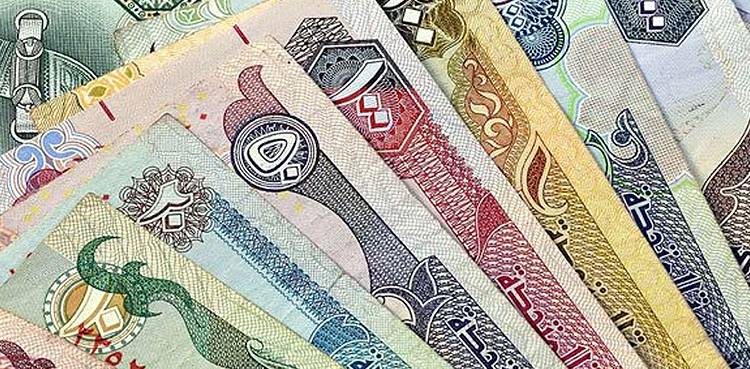Karachi, June 2, 2025 – The latest data from the currency market indicates that the exchange rate for the UAE Dirham (AED) is currently at 76.44 PKR against the Pakistani Rupee (PKR).
This level of stability follows a calm period in the exchange rates of the AED and PKR, buoyed by steady remittances and positive economic conditions in both Pakistan and the UAE.
Understanding the AED-PKR Exchange Rate
The exchange rate between the UAE Dirham and the Pakistani Rupee is affected by market forces as well as actions taken by central banks. Since 1997, the Dirham has been pegged to the US Dollar at roughly 3.67 AED/USD, a policy established by the UAE Central Bank. This fixed rate assists in maintaining the Dirham’s equivalence with the US Dollar, supported by the UAE’s oil-based economy and its efforts to diversify into other sectors.
Conversely, the value of the PKR is regulated under a floating exchange rate system. Our research indicates that it is primarily determined by the demand and supply for foreign currencies. The State Bank of Pakistan periodically intervenes to mitigate volatility. Elements such as remittances, foreign reserves, trade balance, and inflation—including the notable $3.1 billion remitted from the UAE in February 2025—play key roles in influencing the PKR’s value.
The daily conversion rates of AED to PKR are established by interbank and open market rates. The buying rate is currently set at 76.67 PKR, whereas the selling rate from banks and exchange companies hovers around 77.25 PKR, which may also incorporate a small additional fee for sellers. This data is updated every day at 8:00 AM Pakistan Standard Time and can fluctuate throughout the day based on market dynamics.
Effects of Stability
The stable exchange rate of 76.44 PKR for the UAE Dirham has significant meaning for Pakistan and the more than two million Pakistani expatriates living in the UAE. This fixed rate instills confidence in them when sending remittances home to their families, benefiting household businesses in Pakistan. Furthermore, it aids trading firms involved in importing and exporting goods such as food, clothing, and construction materials between Pakistan and the UAE, thereby removing risks tied to currency volatility.
For Pakistan’s economy, having a stable exchange rate between the AED and PKR facilitates efficient remittances, which are crucial for sustaining foreign exchange reserves. Experts assert that this stability is a result of prudent trading practices, strong reserves, and the lack of speculative pressures. The UAE is an essential economic partner for Pakistan, where remittances play a role in stabilizing the PKR. Nonetheless, the managed floating system of the PKR does expose it to domestic influences such as inflation and trade deficits. Currency analysts advise that while the AED-PKR exchange rate is currently stable, market players should remain vigilant for potential volatility arising from external factors like oil price fluctuations and geopolitical tensions that could impact the value of the US Dollar and, subsequently, the Dirham.
Overview of AED and PKR
The UAE Dirham was established in 1973 to replace the Qatar and Dubai Riyal as the official currency of the UAE. It is issued and managed by the UAE Central Bank and is divided into 100 fils. It is abbreviated as AED, and the peg to the US Dollar is supported by the UAE’s oil reserves, prudent fiscal management, and its role as a global trade center. The Dirham is prevalent across all seven emirates, especially in major cities such as Dubai and Abu Dhabi, as well as in tourist destinations.
The Pakistani Rupee, which came into circulation in 1947, is the official currency of Pakistan. It is regulated by the State Bank of Pakistan.


Leave a Comment